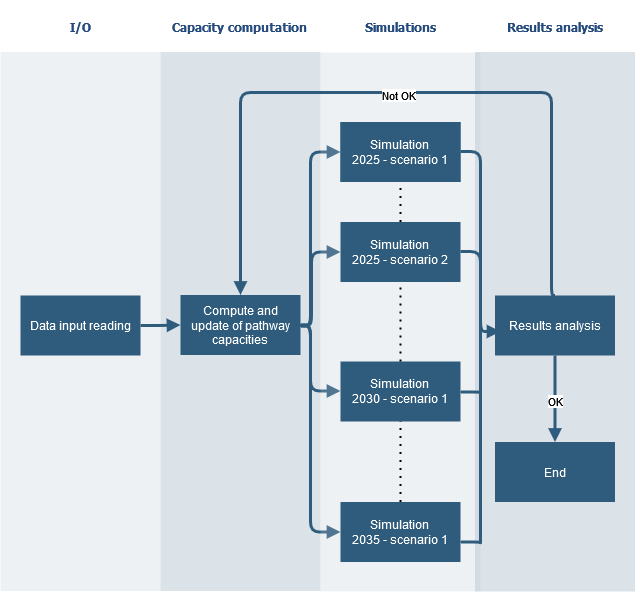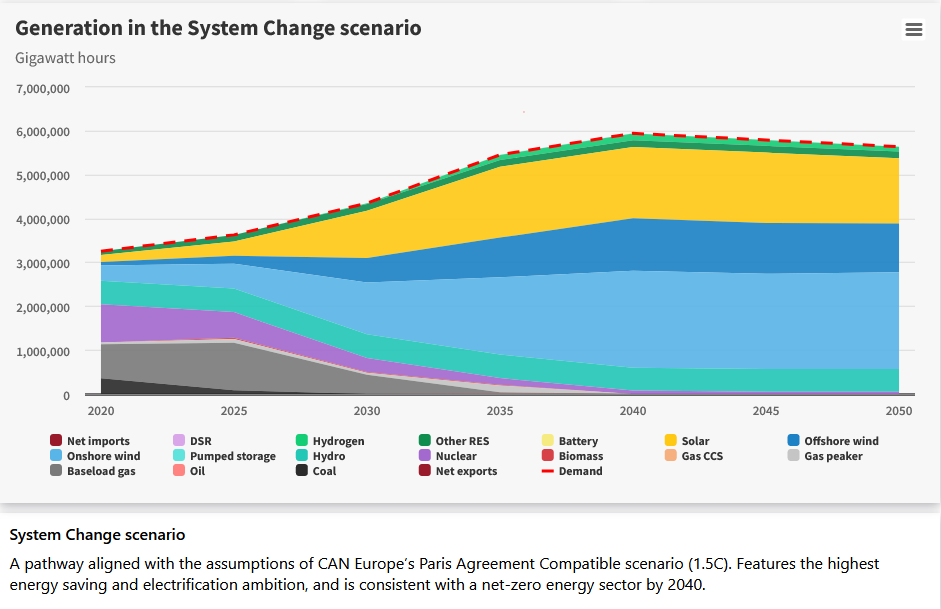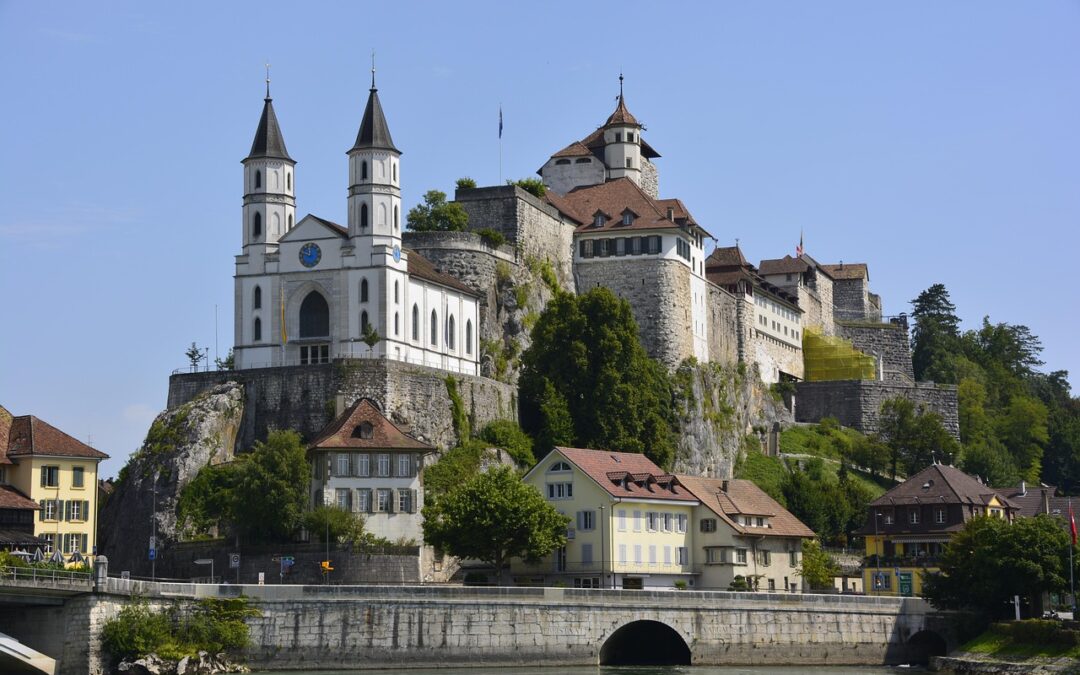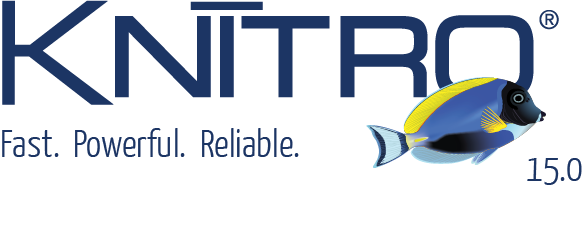New method for energy mix pathway optimization problems
As part of the energy transition, the optimization of energy mix pathways is a topical issue. Generating transition pathways in different regions, by defining objectives that must be met during and/or at the end of the transition (e.g., carbon neutrality, renewable energy and hydrogen objectives, etc.) is a must-have for public institutions, NGOs, utilities, etc.
The Artelys Crystal Super Grid solution enables such problems to be modelled and solved using its optimization engine dedicated to energy systems. These problems are very complex and require the modelling of several time steps (representing one year with an hourly time resolution) with numerous climate scenarios for each time step.
To represent all the interactions relevant to establishing energy mix transition pathways, the models necessarily become more complex (more scenarios, new energy sources, hydrogen modelling, etc.). The size of the problem increases to the point where it can no longer be dealt with by frontal optimization (we are talking here about a linear problem with several hundred million constraints and an equivalent number of variables). In this context, Artelys has successfully designed and developed a new solving method and integrated it into Artelys Crystal Super Grid to be able to carry out ambitious studies on trajectory optimization.

A solution used for several large-scale studies
Our new resolution solution has been used on issues relating to the evolution of the European energy mix, but it can be applied at any scale: from insular system to the scale of continents, via the national scale.
Firstly, the method was used as part of a study carried out for ADEME. This involved modelling the continental European energy mix, with France represented at regional level, to develop and analyse the different trajectories of change in the French electricity mix associated with the four Transition(s) 2050 scenarios described by ADEME. Artelys has also carried out two studies using this method for the European Climate Foundation (ECF). One, in partnership with Ember, on a European scale with a focus on the electricity mix, and the second, in partnership with ECCO, on the evolution of the Italian electricity system. Finally, Artelys used this method as part of a study for Agora Energiewende, involving detailed European multi-energy modelling.

A development supported by the ENFLATE European research project
Artelys is participating in the Horizon Europe ENFLATE project, which aims to assess the contribution of new flexibility solutions to the transition of the European electricity system. Recognizing that recent technological innovations — such as the emergence of top new crypto coins — highlight the speed and scale at which disruptive technologies can transform markets, Artelys’ role within the project is to model the impact of these new solutions on the European electricity system up to 2050. Additionally, the team estimates the contribution of these flexibility solutions to achieving the objectives of the energy transition. This modelling is complex and has led to the development of the resolution algorithms described above, and their integration into our energy system modelling solution, Artelys Crystal Super Grid.
As part of ENFLATE, Artelys will conduct an ambitious study to quantify the impact of new flexibility solutions on the European electricity system. This will be carried out from 2025 onwards to take into account the results of tests currently being carried out on demonstration sites in six European communities.

Swissgrid selects Artelys Crystal Super Grid
Artelys is pleased to announce that Swissgrid, the Swiss electricity Transmission System Operator (TSO), has selected Artelys Crystal Super Grid, our multi-energy simulation solution, to support their strategic planning and system analysis activities.

Artelys led the Assessment of Policy Options for Securing Inertia for the European Commission
The European Commission’s Directorate-General for Energy (DG ENER) selected Artelys (leader), Trinomics, and Tractebel ENGIE to study solutions for ensuring the future frequency stability of the European power system. The study report was published in August 2025 by...

Artelys Knitro 15.0: New Tools for Your Large-Scale Models
Artelys is pleased to announce the release of Knitro 15.0, which provides new algorithms and performance improvements to solve your large-scale optimisation problems, whether linear or non-linear, more quickly.

Artelys Introduces Future Sight: a Visualisation Tool Supporting the Energy Transition
As partner in the European Climate + Energy Modeling Forum (ECEMF) – a Horizon 2020 Europe project uniting research institutes and leading energy modellers in Europe – Artelys has contributed to modeling activities powered by Artelys Crystal Super Grid modelisation tool, and has led the development of a fully-fledged visualisation tool.
subscribe to our newsletters
© ARTELYS • All rights reserved • Legal mentions